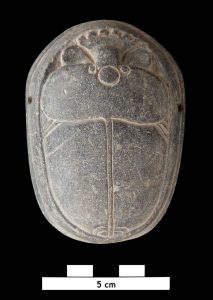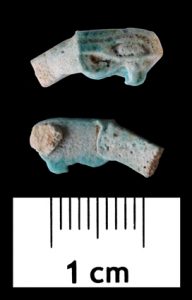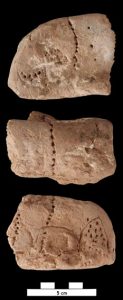In honor of Valentine’s day, we thought we would share with you a tribute worthy of Hathor herself.
As highlighted earlier this week, the burial of Khnum-mes is a treasure trove of Eighteenth Dynasty funerary goods, a period that emphasized quality and artisanship over quantity. Amongst the assemblage is a large stone heart scarab, shaped as a rather abstract beetle. The opposing side is inscribed with Chapter 30 from the Book of the Dead. Though the name of the owner is rarely incorporated into this text, the proximity to the body and similarities to the associated shabti make the identification certain.
We all know that there are few things more romantic than a dung beetle, this is not just a standard heart scarab. In the gap between the upper register and the curved top, an additional inscription has been added. Clearly in a second hand—and rather scruffy for even the standards of heart scarabs—a dedication to the lady of the house has been scratched into the surface. Unfortunately, the name is less clear and the two horizontal lines encompass a number of options. Thus, though the scarab itself appears to belong to the assemblage of Khnum-mes, the naming of his wife quite probably identifies the female body of the chamber (which seems to have been buried slightly later). A married couple, together for eternity. Love memorialized on a dung beetle.




